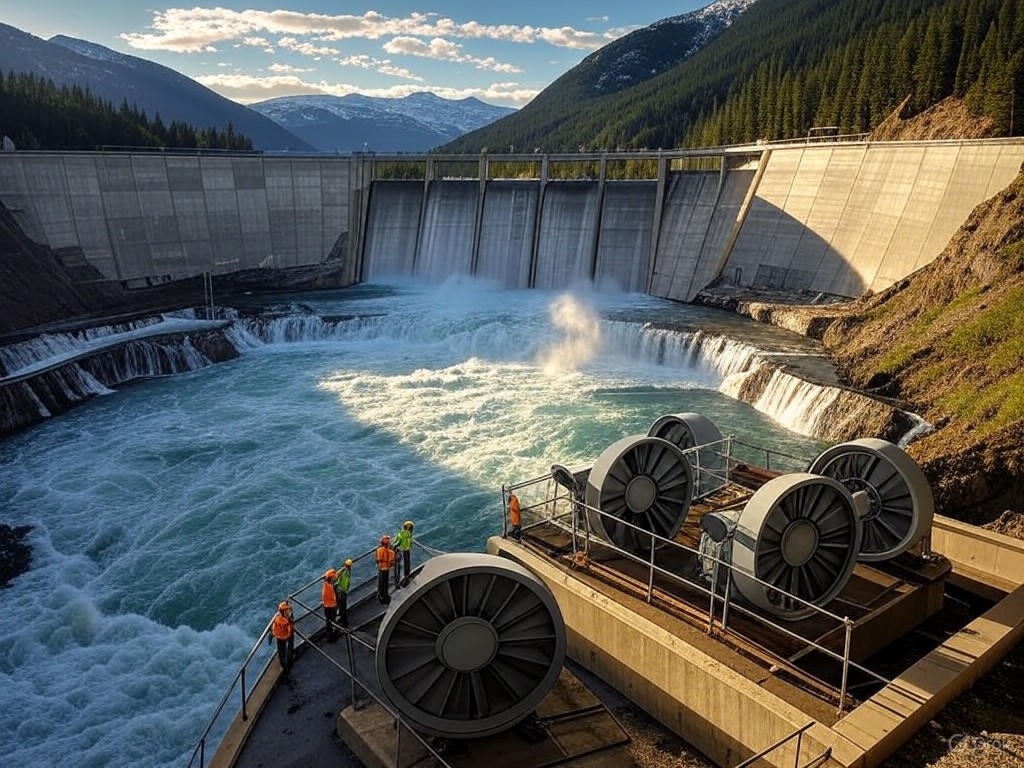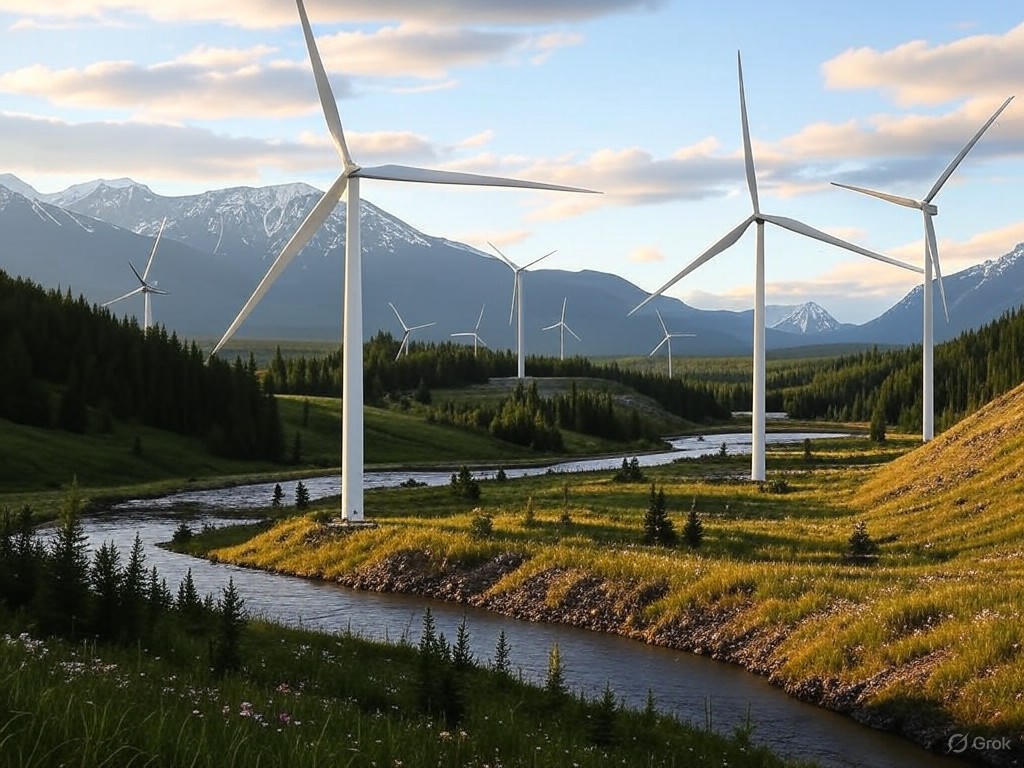BC’s Clean Energy Pivot: A Model for Global Sustainability?
In the rugged landscapes of British Columbia, where snow-capped mountains meet pristine forests and turbulent rivers, a quiet revolution is underway. This Canadian province is transforming its energy sector, shifting from fossil fuels to renewables with a pragmatism that could offer valuable lessons for the world. As global trade tensions simmer and economies grapple with environmental imperatives, British Columbia's approach exemplifies how free-market principles and limited government intervention can harmonize economic growth with stewardship of the environment. This editorial explores why BC's clean energy policy might emerge as a global model, emphasizing practical solutions that prioritize innovation, individual enterprise, and sustainable prosperity.
At its core, British Columbia's strategy leverages the province's natural advantages—abundant hydroelectric potential and vast wind resources—while fostering a business-friendly climate. Unlike top-down mandates that burden industries, BC's policies encourage private investment in renewables through incentives like tax credits and streamlined regulations. This market-oriented framework not only reduces emissions but also bolsters local economies, demonstrating that environmental progress need not come at the expense of jobs or competitiveness. Amid rising trade disputes, such as those between the U.S. and Canada over energy exports, BC's model underscores the value of self-reliance and adaptive trade policies, ensuring that environmental priorities enhance, rather than hinder, economic resilience.
The Foundations of BC's Energy Transition
British Columbia's journey toward clean energy began with pragmatic reforms in the early 2000s, driven by a recognition that resource-rich regions must adapt to changing global demands. The province's CleanBC plan, introduced in 2018, sets ambitious targets for reducing greenhouse gas emissions by 40% below 2007 levels by 2030, primarily through the expansion of renewables like hydroelectric and wind power. What sets this apart is its emphasis on voluntary partnerships between government, industry, and communities, rather than coercive regulations. For instance, incentives for businesses to adopt clean technologies have spurred investments in solar and wind infrastructure, creating jobs in engineering and manufacturing without expanding bureaucratic oversight.
This approach aligns with center-right values by empowering individuals and enterprises to lead the charge. As The Wall Street Journal noted in a 2022 analysis, BC's policies avoid the pitfalls of overregulation seen in other jurisdictions, allowing market forces to dictate the pace of innovation. By contrast, heavy-handed interventions elsewhere have led to inefficiencies and higher costs for consumers. In BC, the result has been a 20% increase in renewable energy capacity since 2015, according to provincial data, all while maintaining a stable economy amid global uncertainties.

This image captures the Nechako River hydroelectric facility, symbolizing BC's harnessing of natural waterways for sustainable power generation, a cornerstone of its clean energy strategy.
Trade tensions add a layer of complexity to this transition. With the U.S. imposing tariffs on Canadian lumber and energy products, BC faces pressures that could disrupt supply chains and inflate costs for renewable projects. Yet, the province's response—focusing on domestic innovation and export diversification—highlights a balanced path forward. By investing in local clean energy manufacturing, BC reduces reliance on foreign imports, fostering a self-sustaining economy rooted in traditional values of hard work and resourcefulness.
Analyzing the Balance: Economic Growth and Environmental Priorities
The true test of BC's model lies in its ability to deliver tangible benefits without compromising core economic drivers. Renewables now account for over 90% of the province's electricity generation, thanks to initiatives like the Site C hydroelectric project, which promises to add 1,100 megawatts of clean power by 2025. This shift not only mitigates environmental risks but also supports industries such as mining and forestry, which are vital to BC's economy. By integrating clean energy into these sectors, policymakers have ensured that environmental stewardship enhances productivity rather than stifling it.
Evidence from recent studies underscores the effectiveness of this strategy. A report by the International Energy Agency highlights that BC's emphasis on market incentives has led to a 15% drop in energy costs for businesses since 2018, outpacing regions with more interventionist policies. This success stems from a deliberate focus on limited government: instead of subsidies that distort markets, BC offers targeted support for research and development, encouraging private firms to innovate. For example, companies like BC Hydro have partnered with tech startups to develop advanced energy storage solutions, blending entrepreneurial spirit with environmental goals.
However, challenges persist, particularly in the realm of trade. Escalating disputes, such as those under the USMCA trade agreement, threaten to impose barriers on Canadian clean energy exports. A Clean Energy Canada analysis from 2023 warns that protectionist measures could raise tariffs on BC's hydroelectric exports, potentially slowing investment. Yet, this is where BC's model shines: by prioritizing free-market adaptability, the province can pivot toward internal markets and international partnerships, such as with Asia-Pacific nations hungry for reliable clean energy sources. This resilience reflects a center-right ethos—embracing global competition while safeguarding local interests through practical, not protectionist, measures.

This photo depicts a wind farm in the Okanagan Valley at dawn, illustrating the integration of renewables into BC's rural landscapes and their role in driving economic diversification.
Evidence and Global Implications
To appreciate BC's potential as a global model, consider the empirical data. According to Statistics Canada, the province's GDP grew by 2.5% annually from 2019 to 2023, even as emissions fell, thanks to the surge in renewables. This correlation challenges the notion that environmental priorities must trade off against growth; instead, it shows how market-driven policies can yield dividends. For instance, the expansion of clean energy has attracted over $5 billion in private investments, as reported by Bloomberg New Energy Finance, positioning BC as a hub for green technology.
Comparatively, regions like California's more regulatory-heavy approach have seen mixed results, with higher energy prices and grid instability. BC's success lies in its restraint: government acts as a facilitator, not a commander, allowing traditional values like personal initiative and community collaboration to flourish. As trade tensions evolve—exacerbated by geopolitical shifts such as U.S.-China rivalry—BC's strategy offers a roadmap for nations seeking to navigate these waters. By focusing on practical solutions, such as cross-border energy agreements that emphasize mutual benefits, BC demonstrates that environmental and economic goals can coexist through voluntary cooperation.
In this context, the role of renewables cannot be overstated. Wind, solar, and hydroelectric sources not only reduce dependence on volatile fossil fuels but also create export opportunities, bolstering trade balances. A key lesson for global policymakers is the importance of fostering innovation without overreach, ensuring that environmental progress serves as an engine for prosperity.
Conclusion: A Path Forward Rooted in Practical Wisdom
British Columbia's clean energy policy stands as a testament to what can be achieved when free markets, limited government, and a respect for natural resources converge. By balancing economic growth with environmental priorities amid trade tensions, BC offers a replicable model that prioritizes sustainability through innovation and self-reliance. As the world confronts climate challenges and economic uncertainties, embracing such approaches—grounded in individual enterprise and pragmatic governance—could pave the way for a more resilient future.
Yet, success depends on vigilance. Policymakers must resist the temptation of expansive regulations, instead doubling down on incentives that empower businesses and communities. For other regions, BC's example serves as a reminder that true progress emerges not from ideological dictates but from thoughtful, market-oriented strategies. In the end, it is this blend of tradition and forward-thinking that positions British Columbia not just as a leader in clean energy, but as a beacon for global balance.

